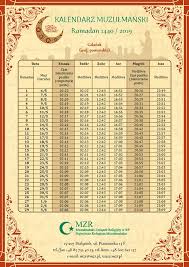Kalendarz muzułmański

Kalendarz mahometański został wprowadzony przez Mahometa w 632 r. Odrzucił on stosowaną dotąd przez Arabów rachubę czasu, opartą na systemie księżycowo-słonecznym, z miesiącami przestępnymi i erą, liczoną od tzw. „roku słonia” (tj. roku najazdu Arabii przez wojska Jemenu używające słoni bojowych). Swój kalendarz oparł wyłącznie na systemie księżycowym.
Z początku rok muzułmański składał się z 12 miesięcy. Nie miały one ściśle określonej długości. Każdy miesiąc zaczynał się z chwilą pojawienia się pierwszego sierpa Księżyca po nowiu i trwał do najbliższego ukazania się po następnym nowiu; wówczas zaczynał się nowy miesiąc. Miesiąc trwał więc 29 lub 30 dni. A po upływie 12 księżycowych miesięcy — rozpoczynał się następny rok.
Taki kalendarz, choć niezbyt dokładny, był zrozumiały dla ogółu. Z czasem uległ on pewnym modyfikacjom. W rezultacie — obowiązujący dziś kalendarz muzułmański składa się z 12 miesięcy liczących na przemian po 30 (miesiące 1, 3, 5, 7, 9 i 11) i 29 dni (miesiące pozostałe). Zwykły rok tego kalendarza liczy więc 354 dni. Ale astronomiczny rok księżycowy ma 354 dni, 8 godzin, 48 minut i 36 sekund. Różnica między rokiem kalendarzowym a astronomicznym osiąga więc w ciągu 30 lat… 11 dni. Aby tę różnicę usunąć i rok kalendarzowy uzgodnić z astronomicznym (księżycowym, oczywiście), wstawiono w cyklu 30-letnim 11 dni przestępnych, które przypadają na 2, 5, 7, 10, 13, 16, 18, 21, 24, 26 i 29 rok tego cyklu.
Mimo to rok kalendarza muzułmańskiego jest prawie o 11 dni krótszy od roku zwrotnikowego. Jego początek przypada więc za każdym razem innego dnia. Zawsze jednak zaczyna się zgodnie z fazą Księżyca rozpoczynającą miesiąc. Miesiące zaś dzielą się na tygodnie.
Początek ery liczą muzułmanie od 16 VII 622 r., tj. daty Hidżry, czyli ucieczki Mahometa z Mekki do Medyny. W 11 roku Hidżry wyznawcy Mahometa przyjęli ustanowiony przez niego kalendarz. Obowiązuje on do dziś w wielu krajach arabskich — nie tylko jako kalendarz religijny, ale i państwowy.
